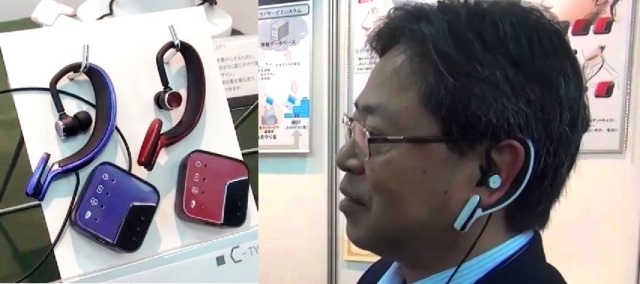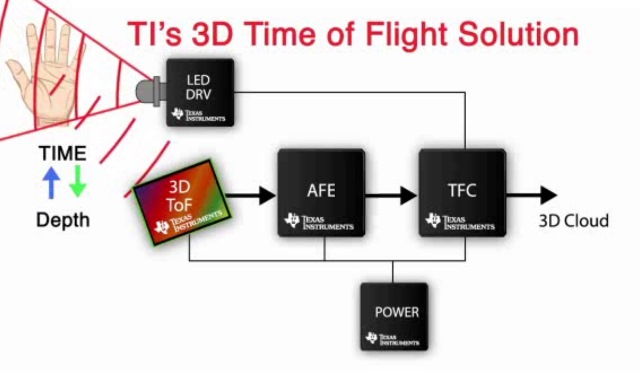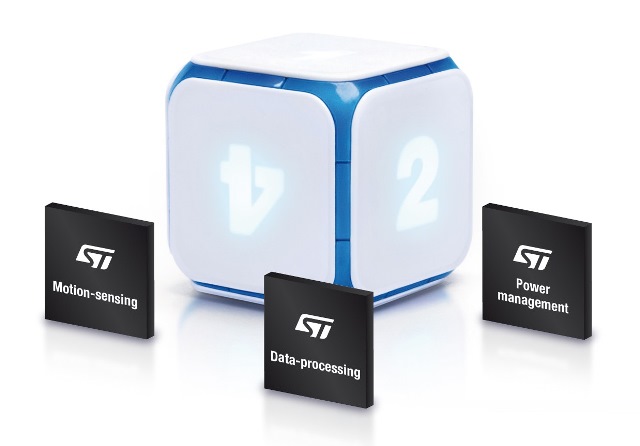BY KAREN LIGHTMAN
Executive Director
MEMS Industry Group
www.memsindustrygroup.org
What’s the next “smart thing?” Will it be a smartphone, a smartwatch such as Apple's new AppleWatch, smart glasses, an ear-worn computer like Kazuhiro Taniguchi’s Ear Switch (Fig. 1 ) — or something completely different? MEMS Industry Group recently polled leading technologists from LG, Samsung, Bosch, STMicroelectronics, InvenSense, and Freescale Semiconductor, as well as from Bluetooth SIG, about their perspectives on the future of smart devices. Whether or not they agree on the type of mobile device that will continue to drive the consumer electronics business forward, industry innovators agree that the consumer’s passion for intelligent mobile electronics is here to stay.

Fig. 1: Created by Hiroshima City University staffer Kazuhiro Taniguchi, who calls the prototype Bluetooth ear-worn computer an Ear Switch, the device puts gyro-sensors, compass, GPS functions, barometer, speaker, microphone, and battery in a form-fitting earpiece. The device's interface also uses infrared to detect when the wearer opens and closes his or her mouth; head and mouth movements send corresponding command signals back to the device. Apps could be created that would let the device, say, access weather or traffic information using head/mouth gestures.
Smartphone evolution
Smartphones are evolving quickly. With powerful processors, high-resolution cameras, and a wide range of MEMS and sensors making new classes of applications possible, smartphones now dominate the mobile-device market.
Jungkee Lee, principal engineer at Samsung, sees more “functional modules” embedded in smartphones, including pico projectors, noninvasive glucose meters, and food spectrometers. And if we can embed a 3D depth sensor into a smartphone or tablet, said Lee, new markets such as 3D scanning, 3D measurement, 3D video, 3D gaming, and indoor navigation will emerge. “There are several kinds of architectures being explored for 3D depth sensing,” added Lee, “including Structured Light by Prime Sense (now acquired by Apple), time-of-flight by Microsoft, SoftKinetic (Fig. 2), PMD, and a mobile array camera by Pelican Imaging. Each technology has pros and cons, but the final winner should satisfy the market.” An example of one of the technologies (SoftKinetic's) is seen in Fig. 2 .

Fig. 2: SoftKinetic’s DepthSense 3D Imaging Time-of-Flight CMOS sensor measures how long it takes for infrared light to make the trip from the IR source to the target and back – the time of flight. The technology is currently being used in the Texas Instruments' chipset seen here for consumer applications, as well as the Melexis MLX75023 for the automobile safety and infotainment markets.
We found broad consensus on one point: the role of smartphones in the technology ecosystem. As the use of the phone (for actually calling people) has become almost a vestigial organ on the smartphone, perhaps we need a new moniker to describe its next evolutionary step.
Jong Sup Baek, innovation technologist at LG, believes that smartphones will become like smart gateways. “While they’ve evolved as standalone devices, from now on they will be a hub for the Internet of Things (IoT) and wearable devices.” And Wolfgang Schmitt, senior manager strategic marketing at Bosch Sensortec, called the smartphone “the hub for managing and communicating with all the smart things in the user’s daily smart environment. It will be ‘the’ device to interact with the Internet of Things and Services.” Michael Housholder, senior director, business development at InvenSense, noted that “emerging devices such as wearable activity monitors and smart watches will complement the smartphone by collecting data and displaying quick reference information.”
And because smartphones will remain the most convenient uplink to the cloud, according to Ian Chen, marketing director, Sensor Solutions Division, Freescale Semiconductor, we must pay more attention to security and privacy. “This will go beyond just passwords and encryption,” said Chen “and into multiple levels of security that use biometric and geometric finger prints that will make authentication difficult to fake.” We believe security and privacy are essential from the initial design through manufacturing.
Luca Difalco, vice president of marketing and applications at STMicroelectronics (ST), said that smartphones are “exceptional” because everyone carries one. He added that “smartphone evolution will build on this exclusivity by providing capabilities related to your current location, including location based services; health and wellness, via extensions that might monitor your heart rate, blood pressure or blood-sugar level; entertainment through embedded pico projectors and screen mirroring; and security, via activity, sound and/or environmental monitors.”
An intelligent future
With manufacturers eagerly launching new types of smart devices for the consumer market, will the smartphone will remain the de facto smart device of the future — or will wearables displace it? Samsung’s Lee foresees a “renaissance of 3D mobile displays without glasses,” explaining that head or eye-gaze tracking by a front camera with a light field display screen may comprise the enabling technology. For Lee, more evolved smartphones rather than discrete wearables are the devices of the future.
When asked about volume leadership, LG’s Baek said that only wearables as a group, rather than a single type of wearable, will exceed the number of smartphones. “It might take five to ten years to get there, but we are going to have smart shoes, smart rings, and smart glasses.” Baek also mentioned LG's G Watch (Fig. 3 ) and the company’s Smart TVs as other smart devices that enhance the consumer experience.

Fig. 3: LG says its G Watch, powered by Android Wear technology, will be compatible with a wide range of Android smartphones.
Suke Jawanda, CMO of the Bluetooth SIG, also talked about new categories of “connected intelligence.” “Google Glass, beacons, and the Scanadu Scout – a tiny medical device that tracks and analyzes all of a patient’s vital information — are providing functionality we had never even dreamed of previously. This is the future of the intelligent mobile device — connectivity in the objects we already know and love, and new products we haven’t yet conceived of.”
Leading role
MEMS/sensors play a leading role, not only in the ever-evolving smartphone, but also in new categories of wearables. Asked about the future role of MEMS and sensors in mobile devices, ST’s Difalco said that “sensors will continue to output relevant information and interpret human interaction, though with far greater precision and in much-closer-to-real-life applications. They will become a completely integrated part of our daily activity.” (See Fig. 4. )

Fig. 4: Want a smarter way to role the dice? Game Technologies’ DICE+ uses motion-sensing and other technologies from ST.
Not surprisingly, all of these competitive MEMS/sensor makers were in agreement. Bosch Sensortec’s Schmitt claimed that there is “huge potential for many more smart sensors and sensor clusters beyond those which are already available in the CE world today.” And Freescale’s Chen noted that “MEMS will remain the most inexpensive means to provide accurate sensing, so it will play an integral part.” He added that MEMS sensor data will be a primary contributor to Big Data.
Of course, the role of connectivity is vitally important to the “next smart thing.” “Confined by proprietary wireless technologies,” said Jawanda, “the fitness-tracking market shipped less than 15 million products in its early years. But since the adoption of Bluetooth Smart in 2010, shipment numbers for wearables have doubled to about 35 million, and are projected to reach more than 150 million by 2018.”
That certainly speaks to the impact that Bluetooth is having on the wearables market. And through the combined contributions of the MEMS/sensors device makers, mobile device manufacturers such as Samsung and LG will have the intelligent sensing and actuation they need to bring the “next smart thing” to market, year after year.
Advertisement
Learn more about MEMS Industry Group





